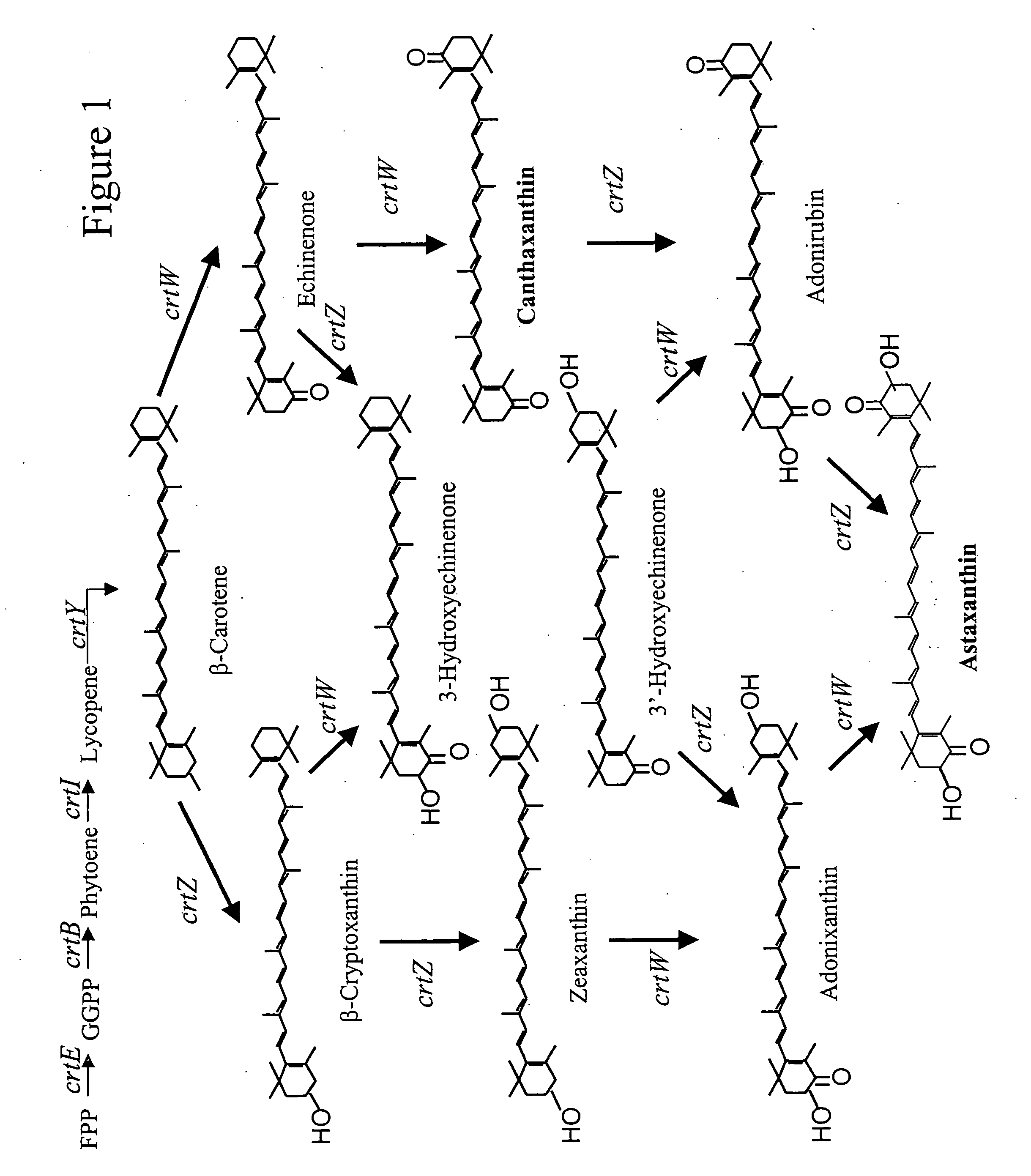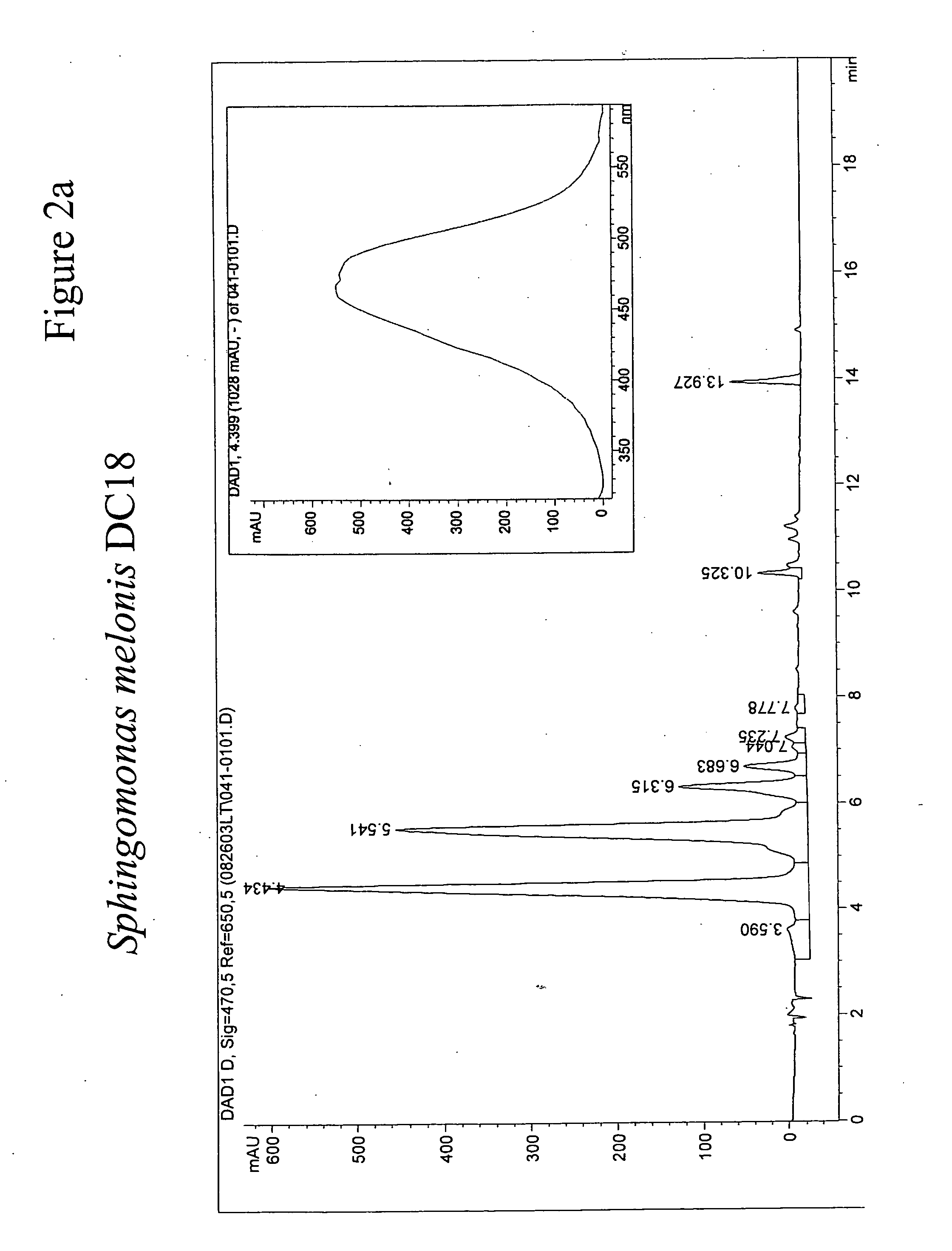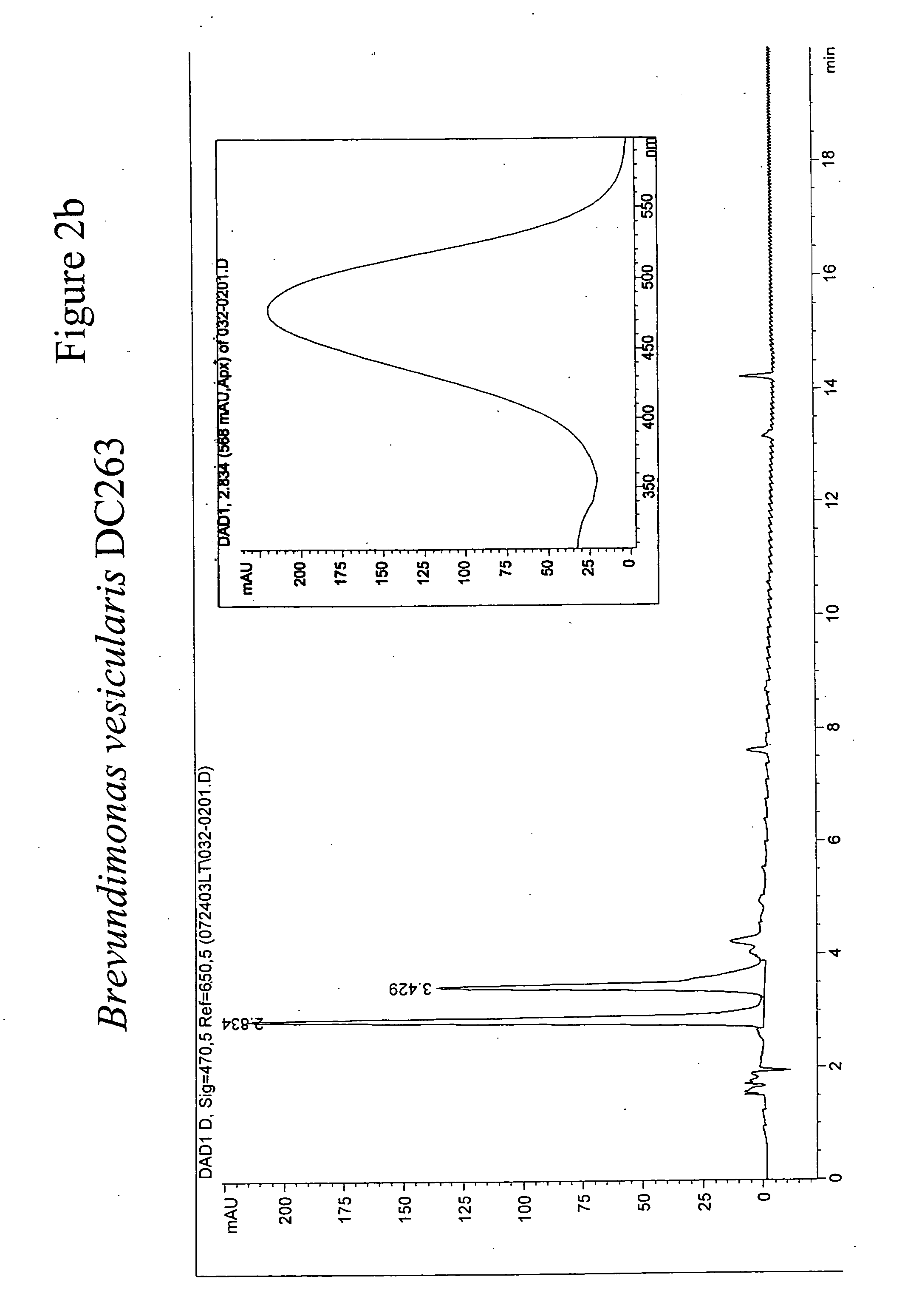Novel carotenoid ketolases
a technology of carotenoid ketone and ketone, which is applied in the field of microorganisms and molecular biology, can solve the problems of high cost of carotenoids produced from these plants, low carotenoid synthesis productivity, and difficult chemical production of compounds
- Summary
- Abstract
- Description
- Claims
- Application Information
AI Technical Summary
Benefits of technology
Problems solved by technology
Method used
Image
Examples
example 1
Bacterial Strains Producing Ketocarotenoids
[0243] This example describes isolation of three bacterial strains that produce ketocarotenoids and preliminary analysis of their carotenoids.
Strain Isolation and Typing
[0244] To isolate novel carotenoid producing bacterial strains pigmented microbes were isolated from a collection of environmental samples. Approximately 1 g of surface soil from a yard in Wilmington, Del. was resuspended in 10 mL of tap water. A-10-μL loopful of the water was streaked onto Luria-Broth (LB) plates and the plates were incubated at 30° C. Pigmented bacteria with diverse colony appearances were picked and streaked twice to homogeneity on LB plates and incubated at 30° C. From these colonies, one which formed orange-pink colonies was designated as strain DC263. Strain DC18 was isolated from a Pennsylvania stream. Serial dilutions (10−2, 10−4 and 10−6) of the aqueous sample were plated onto large 245×245 mm 15% agar plates with basal medium enriched with tryp...
example 2
Construction and Screening of Small Insert Libraries
[0259] This example describes construction of the small insert library from the bacterial strains and identification of positive clones that potentially contain the ketolase gene.
Library Construction
[0260] Cells of DC18, DC263 and K1-202C were grown as described in Example 1. Genomic DNA was prepared from the cells using the Qiagen genomic DNA preparation kits. The small insert library of strain K1-202C was prepared by partial restriction digest method. Genomic DNA of K1-202C was partially digested with HincII (Promega, Madison, Wis.) and separated on a 0.8% agarose gel. The 4-6 kb fraction was excised from the gel and extracted using Qiagen MinElute Gel-Extraction kit. The extracted DNA was ligated to pEZseq vector using pEZSeq Blunt Cloning kit (Lucigen, Middletown, Wis.). The ligation mixture was electroporated into freshly prepared competent cells of E. coli 10G containing a β-carotene producing plasmid pBHR-crt1 (U.S. Ser....
example 3
Isolation of Novel Carotenoid Ketolase Genes
[0263] This example describes sequencing of the insert on the positive E. coli clones and identification of novel carotenoid ketolase genes encoded on the inserts.
[0264] Carotenoid analysis indicated that the positive clones probably contained ketolase genes that are responsible for conversion of β-carotene to canthaxanthin and echinenone. The pEZ-based plasmid was separated from the β-carotene reporter plasmid by selecting for ampicillin resistant and kanamycin sensitive clones. The insert on the pEZ-based plasmid was sequenced by random transposon insertion using the EZ-TN kit (Epicentre, Madison, Wis.) and / or primer walking. The sequences were assembled with the Sequencher program (Gene Codes Corp., Ann Arbor, Mich.).
[0265] Genes encoding CrtW ketolases were identified by conducting BLAST (Basic Local Alignment Search Tool; Altschul, S. F., et al., J. Mol. Biol., 215:403-410 (1993)) searches for similarity to sequences contained in t...
PUM
| Property | Measurement | Unit |
|---|---|---|
| Temperature | aaaaa | aaaaa |
| Fraction | aaaaa | aaaaa |
| Fraction | aaaaa | aaaaa |
Abstract
Description
Claims
Application Information
 Login to View More
Login to View More - R&D
- Intellectual Property
- Life Sciences
- Materials
- Tech Scout
- Unparalleled Data Quality
- Higher Quality Content
- 60% Fewer Hallucinations
Browse by: Latest US Patents, China's latest patents, Technical Efficacy Thesaurus, Application Domain, Technology Topic, Popular Technical Reports.
© 2025 PatSnap. All rights reserved.Legal|Privacy policy|Modern Slavery Act Transparency Statement|Sitemap|About US| Contact US: help@patsnap.com



